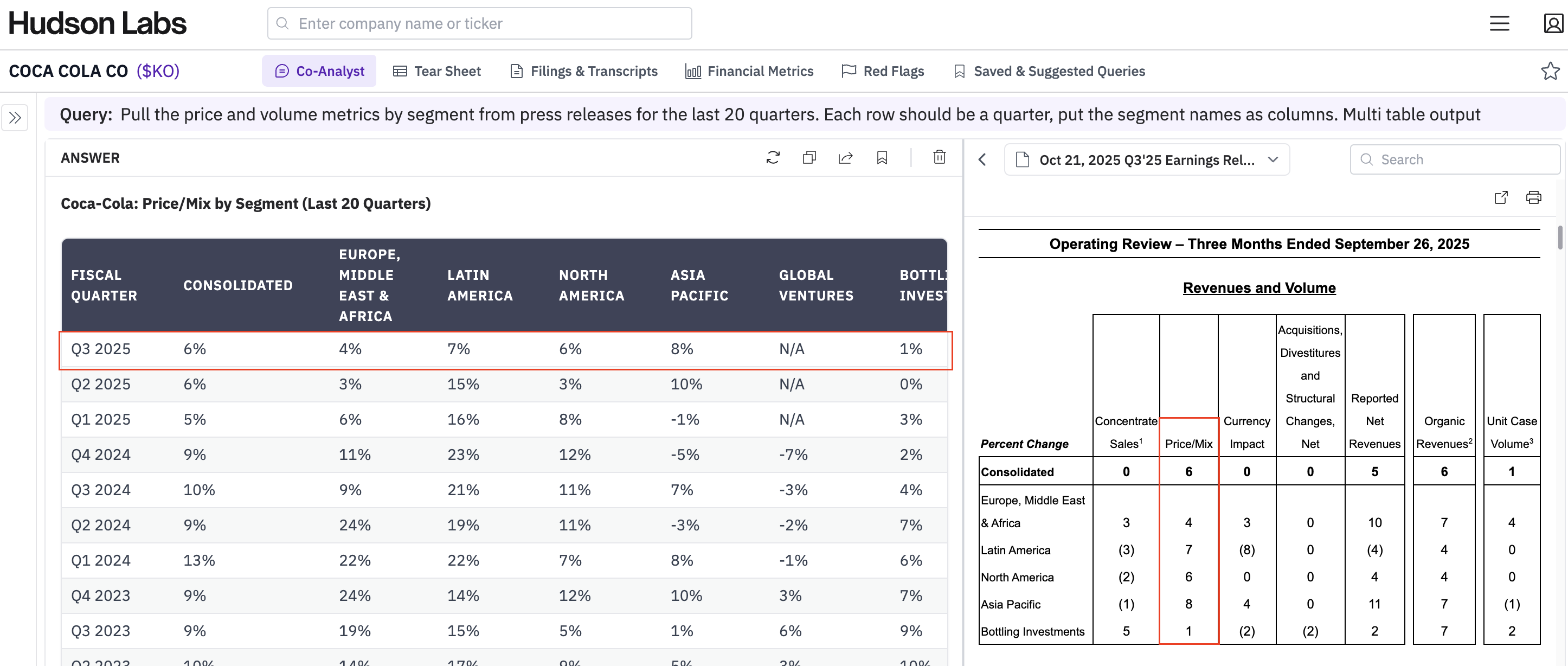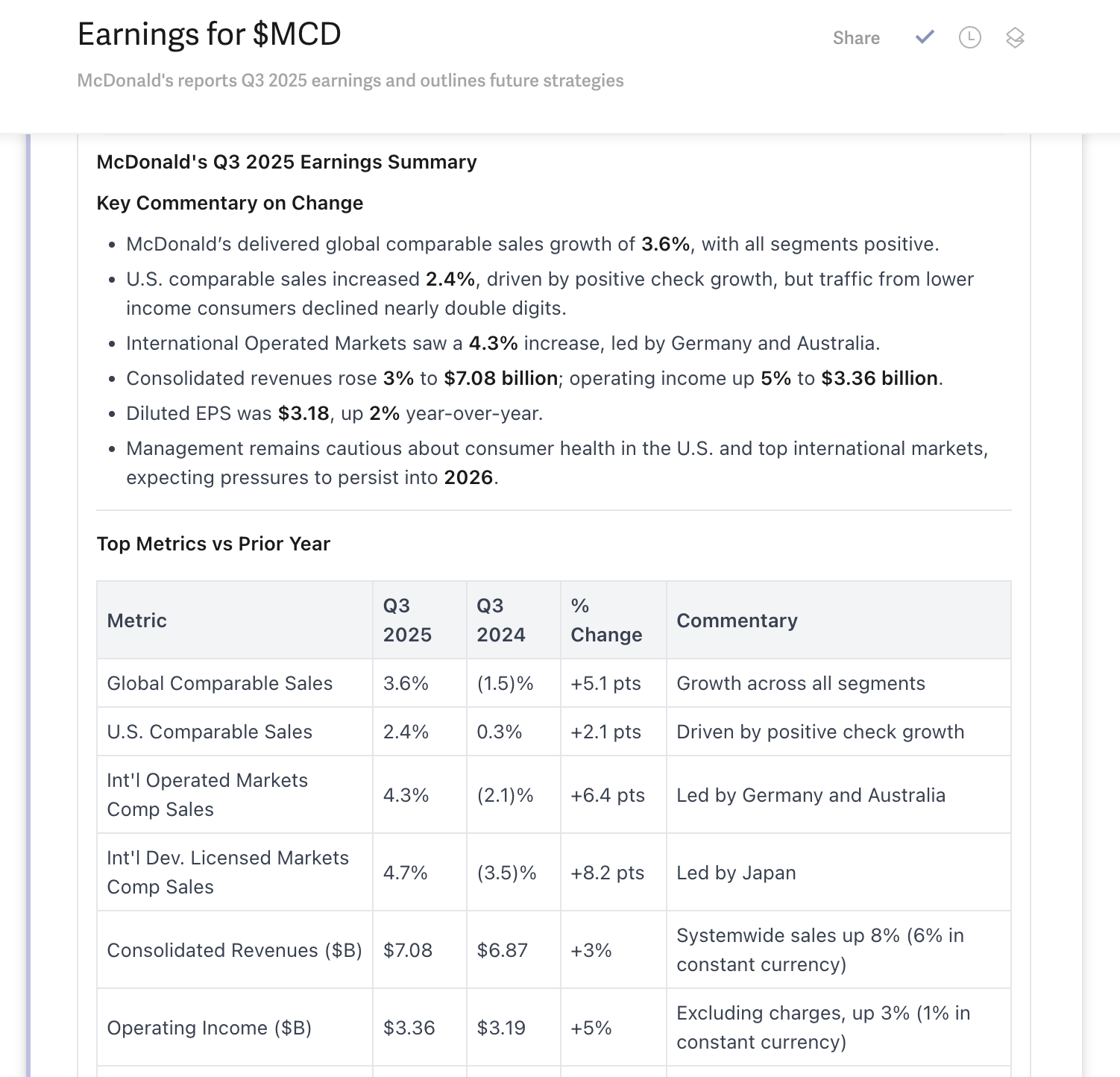Navigating a 10-K annual report is essential for understanding a company's financial health and making informed investment decisions. They are often a helpful guide to assessing the companies you are interested in.
This guide points out the most critical sections of a 10-K, which can help to make better investment decisions by gaining a better understanding of a company's financial position and future prospects. We also provide tips and tricks for reading a 10-K more efficiently without missing red flags.
Where to Find a 10-K Annual Report
U.S. public companies are required to file a 10-K annually and the SEC makes all reports readily available online on the SEC.gov EDGAR website. Learn how to navigate EDGAR here [link to EDGAR power user post]. You can also access 10-Ks using financial intelligence tools like Bloomberg, BamSEC, Hudson Labs and many others. Find lists of free and paid investment research tools on our blog.
Most Important Sections of a 10-K to Focus on When Getting to Know a Company or Sector
The following sections are particularly useful when you are getting to know a company that you are not already familiar with.

If you are unfamiliar with the company, start by examining the business overview in the 10-K report. This section provides an essential introduction to the company's operations and market context. The business overview presents an in-depth look at the company's operations, products or services, industry landscape, and competition, which can help investors identify the company's unique selling points, growth strategies, and potential challenges within its industry.
Financial Statements - Item 8
The three financial statements (balance sheet, income statement and cash flow) offer a snapshot of the company's financial performance, presenting key metrics like revenue, net income, and earnings per share. If you’re planning to do a deeper dive, it becomes essential to read the notes as well as the core statements.
Management Discussion & Analysis (MD&A) - Item 7
The MD&A provides management's perspective on the company's performance, opportunities, and risks. Reading the MD&A with a discerning eye can help investors gauge the credibility of management and better understand the company's strategic direction.
Most Important Parts of a 10-K Annual Report When Looking for Problems
Identifying potential problems or red flags in a 10-K financial report is critical to evaluating a company's risk profile and making well-informed investment decisions.
Hudson Labs' comprehensive Red Flag Guides Part I and Part II are a must read for a clear and concise explanation of where the riskiest flags lurk in a 10-K.
Notes to Financial Statements - Item 8
The financial statements can only tell you so much. To determine whether growth is sustainable and to truly understand the financial viability, check the financial notes for major accounting policy changes, off-balance sheet transactions and to verify whether management is relying on aggressive estimates.
Internal Controls - Item 9A
This section provides information on the effectiveness of the company's internal controls over financial reporting (ICOFR). ICOFR is a set of procedures and processes designed to ensure the accuracy and reliability of financial statements. Weak internal controls can lead to inaccurate financial reporting and create opportunities for fraud. To learn more read, “Interpreting internal control (ICOFR) weaknesses in stock research”.
Example of Item 9A highlighting an issue:

Legal Proceedings - Item 3
The legal section discloses ongoing legal proceedings and associated risks. Litigation can significantly impact a company's reputation and financial position, so it is vital to be aware of any legal issues the company may face. Legal disclosures can also help you judge whether there may be management integrity issues. To find legal or regulatory issues that may not have been fully disclosed in the annual report, explore the tools listed in “Investment research resources for finding and avoiding fraud”.
SEC comments - Item 1B
The SEC will submit a comment letter to the filer when questions or concerns arise during its review of the company's filings. The comment letters may not be included in the 10-K so checking the company's Hudson Labs profile or the EDGAR database for recent SEC correspondence is essential.These letters often contain pertinent information.
SEC comments in the Hudson Labs Feed:

How to Read a 10-K Annual Report More Efficiently
The average 10-K would take hours to read and even professionals can find it daunting to extract the useful information from the boilerplate or needless hype. Using a tool like Hudson Labs is not only a time saver, the information is presented in a manner that makes clear, based on research, where the important information is and how important it is.
- Hudson Labs is a robust platform that automatically identifies relevant information and red flags in 10-Ks, 10-Qs, and 20-Fs, presenting them in a rank-ordered list. This approach enables investors to focus on the most critical aspects of a company's financial health.
- Blacklining/doc compare - Blacklining tools allow you identify changes in the annual report compared to previous years by highlighting sentences that have been added or deleted. Hudson Labs provides blacklining, as do many other tools including Bloomberg, Factset, CapEdge and more. However, it is important to note that blacklining can sometimes generate more noise than signal, as many changes reflect a proactive legal team rather than increased risk.
By leveraging tools like Hudson Labs, investors can cut through the noise and have a much more comprehensive understanding of a company's financial position and risk profile. This knowledge empowers investors to make more informed decisions in their investment strategies.
Conclusion
The average 10-K would take hours to read. We have given you some tips on what to focus on if you choose to read it yourself. Or you can use a tool like Hudson Labs.
Hudson Labs extracts qualitative red flags from securities filings and predicts fraud in real-time. Hudson uses large language models to find information with a learned association with downside outcomes instead of relying on keywords or document comparison.
Hudson Labs' proprietary Risk Scores take advantage of ten years of historical training data including SEC enforcement actions, settled class action lawsuits related to fraud, as well as a terabyte of financial language data to give you qualitative red flags that are predictive of downside risk.








